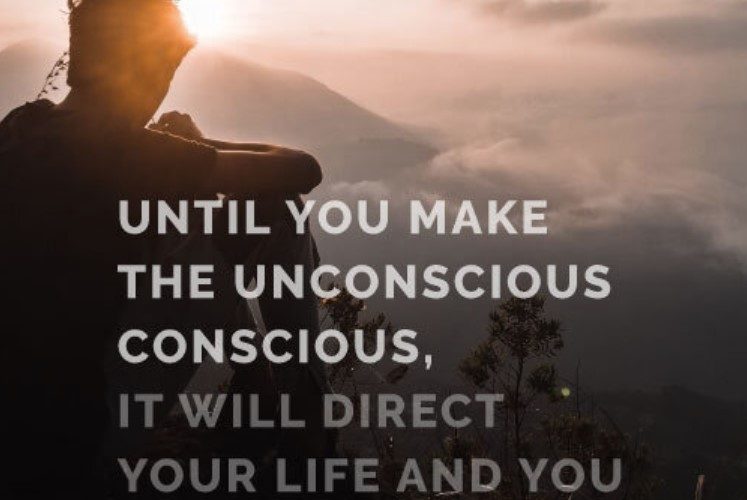How do you know it is yourself when you look in the mirror?
Now that you’ve read this question, and maybe you were surprised, or perhaps you weren’t, can you think about the following two things?
What if you could remove, erase, or replace unpleasant sensations when you think about particular past events?
What if when you think about important, high-steak events in the future, you would have had a sense of security, calm, and perhaps even excitement?
I know it may seem difficult or even impossible, but there are neurolinguistic programming methods that do just that.
Let me tell you something. I carried a backpack full of unpleasant events from my past for a long time: bullying, guilt, shame, and disappointments.
Many people patronized me, and in order not to lose what little attention they gave me, I was willing to accept any behavior from them. I was sad for a long time, and I got to the point where I consciously accepted such abusive behaviors because I knew that the pain from sadness was always less than the pain caused by loneliness.
The method I share today not only resolves an isolated event but is meant to resolve all subsequent events that originate from that initial event.
Richard Bandler, one of the most critical people in NLP, said that “it’s never too late to have a happy childhood.” Meaning it’s never too late to bring resources where they were lacking.
That’s exactly what I do in my neuro-linguistic programming classes. I offer powerful methods for changing perceptions, solving past problems, and increasing daily energy.
Don’t you want to get out of bed every morning in the first few minutes? Don’t you want to look at life with serenity, knowing that you have the mental resources to regain balance no matter what happens?
Today I will tell you about one of these most powerful methods, the timeline.
Because time is just a human concept, like light, temperature, or speed, each person perceives this concept in their own way.
Depending on how people perceive time, people are divided into two categories:
– people who are associated with time and live intensely in the present moment. They are said to be in time.
– the other category is when people are dissociated with time. They are good strategists, for them, time is extremely valuable, and they plan their time to the second. These are described as being through time.
Which way is better between these two?
Neither. It depends on the context, and it depends on what you want to achieve. I used to say a while ago: “any quality used badly becomes a defect, and any defect used well becomes a quality.” That’s also true here.
The goal is to be aware of these two ways and use them appropriately in each context.
If you recognize yourself as a person in time, you can train yourself to become through time, as you will certainly need to make decisions and plans throughout your life. If you’re always stuck in the present, the question “how do you see yourself in 10 years?” How does that make you feel? Have you ever thought about it? What about the question, “what will you be like in 20 years?”
Likewise, if you’re constantly living on plans, you’ll also need to train your ability to live in the present to connect with those around you and yourself. What if when someone invites you to dinner, you can’t even enjoy it because you’re always thinking ahead to your plans? Will you be able to have healthy relationships with those around you? Did you know that a lack of relationships leads to loneliness and illness in the long run?
I was, for a long time through time, with plans upon plans, where the mind was always occupied with what I would do, but I gradually understood that it’s just a way of functioning. Nothing more. I started to activate the other mode and train the skills to be in time. How exactly? Let me tell you.
To be in time and live consciously in the present moment, I started doing all actions much slower than usual. I started constantly stepping out of my comfort zone and exposing myself to fear. All these mountain hikes I frequently do, what category do they fall?
If you want to become through time, in other words, more organized, you can start planning and working with lists. You can ask yourself questions like: “how do I see myself in 1, 2, 5 years?” and answer them. You can even start to build some strategies to achieve these goals.
Now that you know that all people perceive time differently, I’m sure you’ll be able to switch depending on the context from one way to another in the best way for you.
If you’ve come this far, I want to congratulate you and tell you that what you’ve learned is enough, as you know more than most people.
You’re probably wondering why I started with the question, “How do you know it is you when you look in the mirror?”
Well, the answer is simple. Because you’re comparing the image to who you were yesterday. And so on, until in the distant past, you discovered that in the mirror was you.
The beauty is, just like the example with the mirror, that if you adjust how you perceive one event in the past, all the following events will change. Brilliant, huh?
I have another gift for you. If you read further, you will get a powerful exercise that changes your perception of past events, and you will have increased energy. This exercise is extremely powerful, and I usually do it in coaching sessions.
Let’s get going.
First, point with one hand where the past is and with the other where the future is. Close your eyes and let your left hand choose for itself which direction your past is, and your right hand, let it be drawn like a solid magnet to your future.
That way, you will have a line from the past through the present and into the future.
Now please think of an unpleasant event from your past. What emotion do you feel, and how intense is it on a scale of 1 to 10?
Please close your eyes, and imagine that next to you, where you are now, is your pictured timeline, stretched out on the floor, starting where your left hand pointed and continuing where your right hand pointed.
And because your mind is highly flexible, please imagine that you have your back on your past and your future in front of you.
You begin to imagine that you start walking, floating backward, on the timeline until the unpleasant event is triggered.
Now I want you to rise above the timeline and go forward, beyond the event in question, as if you were going only a few days before it happened when everything was fine.
Now I want you to look from that place on your timeline to the event that, in a few days, will make you feel unpleasant, only with a difference:
That event is transparent as if it is made of smoke, fog, or maybe steam. Imagine you can look through it to the present moment on the timeline. Now do the next thing: walk through that event on your timeline to the present.
Notice the feeling you get. Is it still unpleasant?
Please repeat the process, and this time, do all the steps faster and faster.
Close your eyes, stay with your back to the past, floating before the unpleasant event. You stop, on your timeline, only a few days before the event. You imagine it transparent, out of steam, out of mist, or maybe. You speed through that transparent event in complete safety to the present moment.
And again. Close your eyes, and repeat the whole process faster and faster.
After you’ve done it a few times, notice how you think about that event. Is it still unpleasant? How do you feel now?
If you want to learn more, I’ll tell you that this concept called “The Timeline” is part of the NLP Practitioner course.
I know this was a longer post than usual, but since you’ve come this far, I invite you to leave me a message with what you got out of the exercise and your results.
See you soon.




